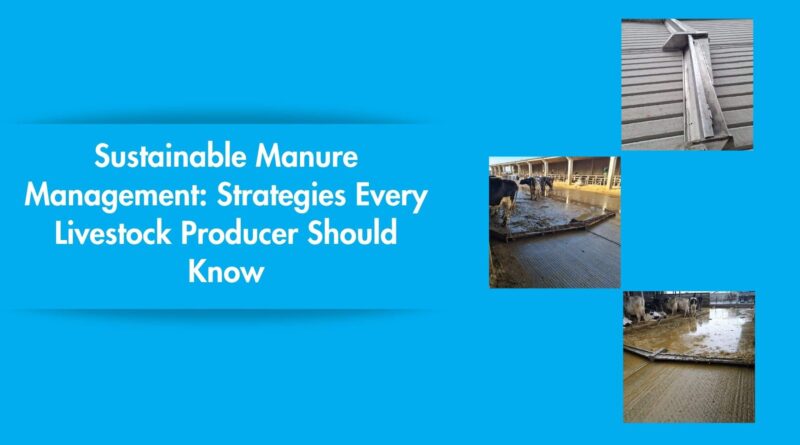Sustainable Manure Management: Strategies Every Livestock Producer Should Know
1. Introduction
Animal agriculture is vital for global food security, nutrition, and economic development. Across many regions, livestock systems—ranging from cattle and poultry to swine and aquaculture—serve multiple roles beyond food, including income generation, employment, soil fertility improvement, and transportation support.
A Manure Management Solution is a structured approach to collecting, storing, treating, and utilizing animal waste in an environmentally sustainable and efficient manner.
As the global population is expected to surpass 9 billion by 2050, the demand for animal-derived food is rapidly increasing. However, expanding production is constrained by limited land and water resources, strict environmental regulations, and the urgent need to protect natural ecosystems. Therefore, sustainable animal agriculture is essential to balance productivity with environmental stewardship.
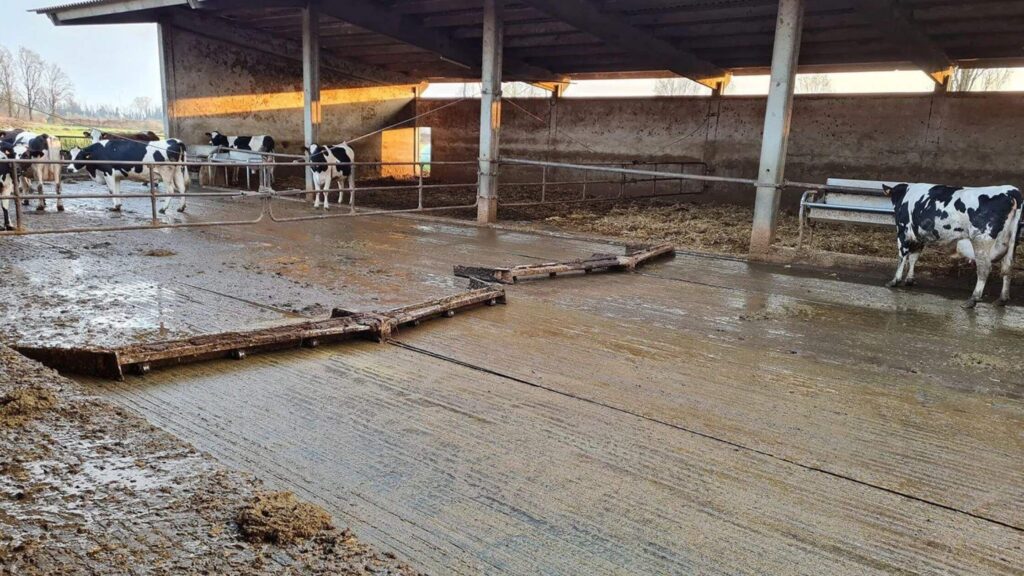
Animal farming produces not just food but also by-products like manure, wastewater,and feed waste. While manure has traditionally been a valuable organic fertilizer, especially in areas with limited access to commercial alternatives, the intensification of livestock operations has led to localized manure surpluses. This excess poses serious challenges such as air and water pollution, greenhouse gas emissions, and the spread of pathogens that threaten public health.
Manure management is now a key concern in modern animal production. Poor handling can result in contamination, disease outbreaks, and ecosystem degradation. To address these risks, sustainable manure management strategies—including legal frameworks, innovative technologies, and best practices—are being widely promoted. These solutions not only reduce environmental impact but also support clean energy, biodiversity conservation, and job creation.
A manure scraper is a mechanical tool or system designed to efficiently remove animal waste from barn floors, helping maintain hygiene and support effective manure management.
This chapter explores practical and sustainable approaches to animal manure management, focusing on eco-friendly practices that benefit both producers and the planet.
2. Characteristics of Animal Manure
Animal manure is rich in essential nutrients and organic matter, making it a valuable resource for soil enrichment and crop fertilization. Its physical and chemical properties, however, directly influence its handling, application methods, and environmental impact.
Manure is typically classified by moisture content into three types:
-
Liquid manure (less than 5% solids)
-
Slurry or semi-solid manure (5–25% solids)
-
Solid manure (more than 25% solids)
Each type requires specific storage and management strategies, and its usability as an organic fertilizer can vary based on consistency and nutrient concentration.
Due to wide variability in manure composition—affected by animal species, feed type, climate, and farming practices—it’s essential to rely on locally sourced data for accurate assessment. Understanding the regional characteristics of manure helps optimize its sustainable use while minimizing waste and environmental risks.
3. Animal Manure Management Systems
An animal manure management system refers to a strategically designed and implemented process that ensures the safe handling, storage, and utilization of livestock waste. This system plays a vital role in minimizing environmental impact and enhancing the sustainability of natural resources such as air, water, soil, plants, and animals.
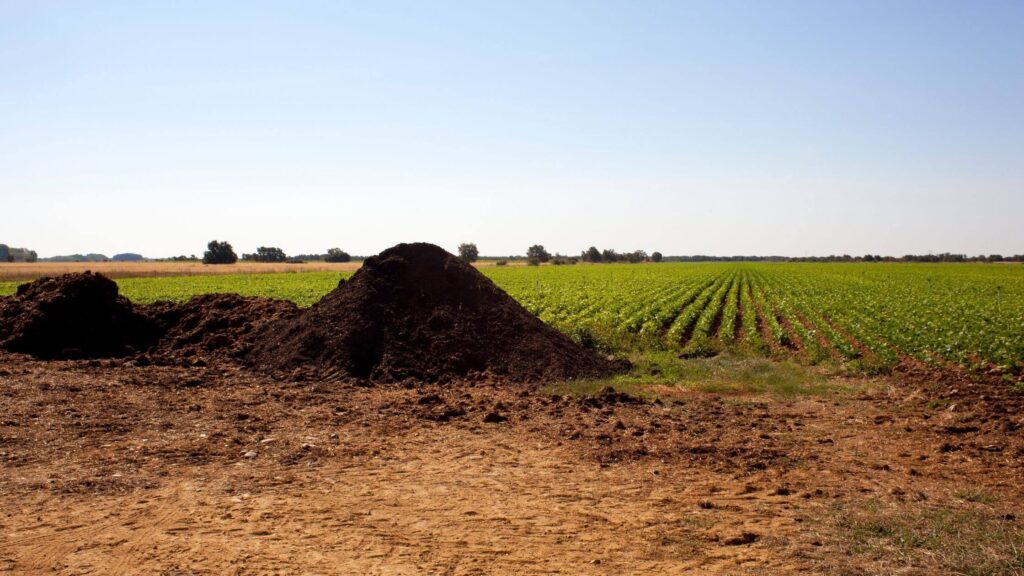
As a key component of the broader agricultural waste management framework, manure management practices vary depending on the animal production system—whether it’s pasture-based or confined housing. Livestock raised on open rangelands typically require different manure handling methods than those kept in controlled environments.
A pumping and mixing solution is an integrated system used to efficiently transport and homogenize animal manure, ensuring consistent nutrient distribution and easy handling for storage or application.
Effective manure management is essential to mitigate health risks and prevent pollutants from entering the environment. A well-structured system minimizes nutrient run-off, controls odours, and ensures that manure is recycled efficiently, turning potential waste into valuable resources.
Beyond environmental benefits, smart manure management also supports public health, promotes economic efficiency, and contributes to social well-being. By transforming livestock waste into bio-resources, we move toward a circular economy—one that conserves raw materials, reduces carbon emissions, and fosters sustainable development through increased use of recycled inputs.
Setting Clear Goals for Effective Manure Management Systems
Defining clear objectives is crucial for the successful planning and execution of animal manure management systems. These goals typically focus on minimizing the environmental footprint of manure handling, reducing nutrient losses, and ensuring the efficient and sustainable use of manure as a resource. A well-structured system also supports compliance with environmental regulations, aligns manure application with optimal timing for agricultural use, and creates opportunities for income generation through the reuse or sale of manure-based products. By setting targeted goals, farmers and producers can maximize the environmental, economic, and agronomic value of livestock waste.
A manure separation system is a technology that separates solid and liquid components of animal manure, making nutrient management more efficient and reducing storage, odor, and environmental impact.
4. Core Principles Guiding Sustainable Manure Management
Effective manure management is rooted in a set of key principles that guide sustainable and responsible handling of livestock waste. These principles, adapted from broader waste management frameworks, are essential when designing and implementing manure management strategies on farms and within agricultural systems. Below are the fundamental principles:
1. Proximity Principle
This principle emphasizes managing manure as close as possible to the point of generation. Localized handling minimizes transport costs, reduces environmental risks, and encourages site-specific solutions for waste utilization.
2. Self-Sufficiency Principle
According to this principle, every region, state, or farm should take responsibility for managing its own manure outputs. While localized waste handling is preferred, regional collaboration may sometimes offer the most efficient and environmentally sound solutions—especially in large-scale livestock operations.
3. Polluter-Pays Principle
This principle holds that those who produce waste—such as livestock farms—are financially responsible for its proper management. It ensures accountability and encourages the adoption of practices that minimize health hazards and environmental pollution from manure.
4. Precautionary Principle
In line with this principle, the lack of full scientific certainty should not be an excuse to delay actions that prevent environmental harm. Especially in cases where manure mismanagement may cause irreversible damage, proactive, cost-effective interventions must be pursued.
5. Sustainable Development Principle
Manure management must support long-term sustainability. This means that while meeting current agricultural needs, practices must not compromise the ability of future generations to enjoy a healthy and balanced environment.
6. Intergenerational Equity Principle
This principle stresses fairness across generations. It ensures that today’s manure management strategies do not pass environmental burdens onto future populations. Responsible practices today lead to a cleaner, safer tomorrow.
Incorporating these guiding principles into manure management plans not only improves environmental outcomes but also aligns with global goals for sustainable agriculture and circular economy practices.
5. Key Challenges in Animal Manure Handling and Management
While animal manure can be a valuable agricultural resource, its improper handling—especially when produced in excess—poses significant environmental, health, and economic challenges. In many intensive livestock operations, unsustainable manure management practices are still common, often due to cost-related concerns and limited infrastructure.
One of the major hurdles is the high cost of manure storage, treatment, and disposal. In regions where more environmentally responsible solutions are seen as financially burdensome, some producers resort to cheaper, but less sustainable, disposal methods. This short-term cost-saving mindset can lead to serious long-term consequences.
Improper disposal of animal manure can result in:
-
Public health risks, such as the spread of zoonotic diseases
-
Food contamination, leading to product recalls and market rejections
-
Environmental degradation, including water and soil pollution
-
Regulatory penalties and fines for non-compliance with waste management standards
These hidden costs can far outweigh the perceived savings of unsustainable practices. Importantly, manure disposal—as opposed to treatment, recycling, or utilization—is considered the least preferred option in the hierarchy of waste management.
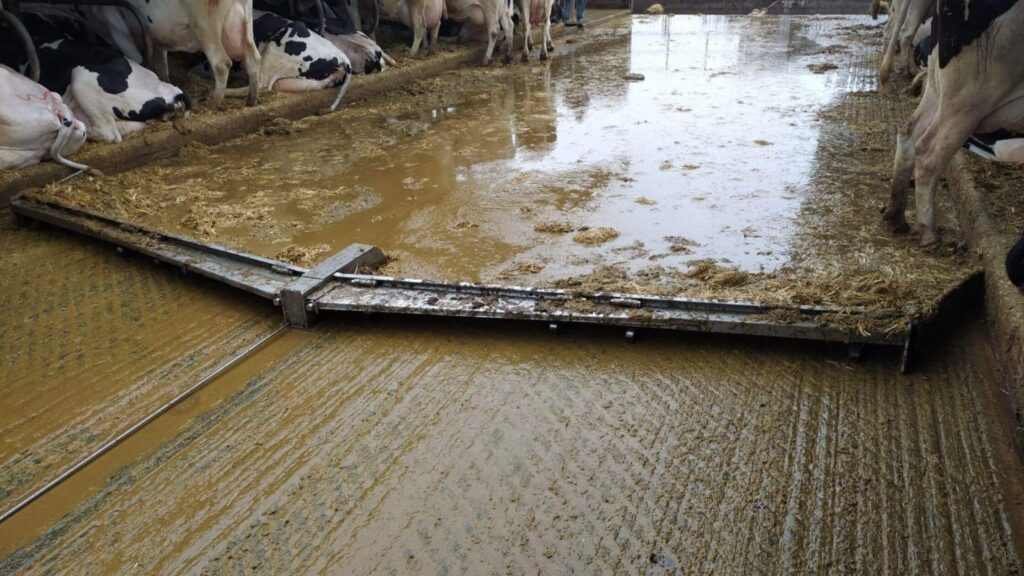
Ultimately, animal manure can be either a valuable resource or a liability, depending on how it is managed. When handled properly, manure contributes to nutrient recycling, soil fertility, and sustainable agriculture. When mishandled, it becomes a source of pollution and financial loss.
6. Strategies for Promoting Sustainable Manure Management
Implementing effective strategies for sustainable manure management is essential to mitigate environmental impacts, comply with regulations, and unlock the economic potential of livestock waste. These strategies span policy formulation, manure treatment technologies, feeding practices, and odor control techniques.
6.1 Policy and Legal Frameworks for Sustainable Manure Management
Addressing the numerous challenges linked to manure handling requires robust policies, regulations, and legal frameworks. These instruments can be developed and enforced at federal, state, regional, or local levels. A comprehensive manure management policy defines responsibilities, outlines standards, and guides actions toward sustainable livestock waste management.
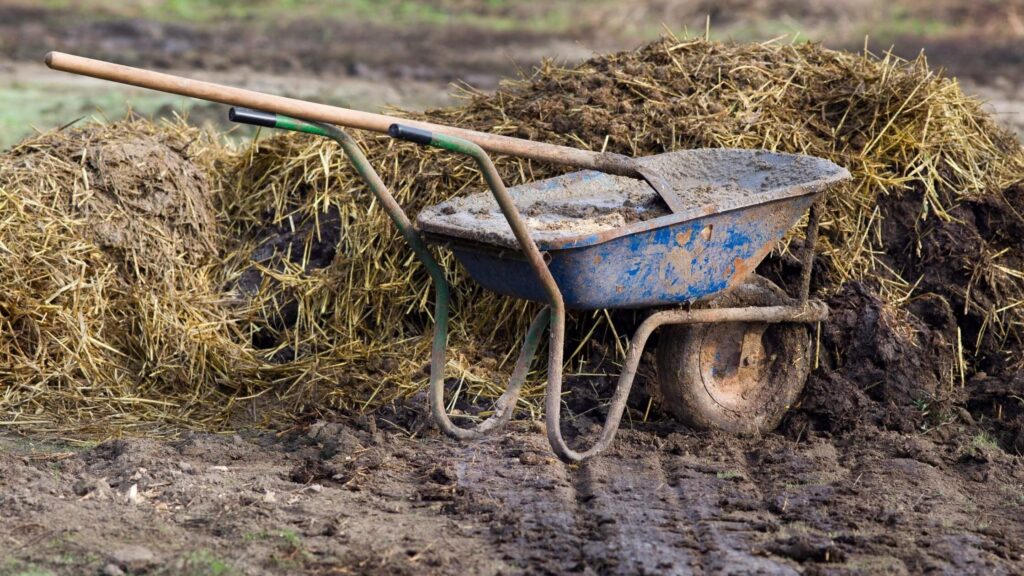
Key features of effective manure policies include :
-
Long-term vision and goals
-
Clear roles for waste generators and public authorities
-
Integration with existing policies such as Agricultural, Environmental, Livestock Development, and Climate Change strategies
-
Supportive legislation and mandatory or voluntary compliance standards
However, in many countries, manure-related provisions within broader policies lack specificity. Stand-alone policies like the Integrated Livestock Manure Management Policy of Bangladesh aim to bridge these gaps.
To ensure successful implementation :
-
Stakeholder participation is essential during policy development
-
Clear targets and timelines must be defined
-
Incentives such as subsidies can enhance the adoption of practices like anaerobic digestion
-
Coordinated enforcement across ministries is critical to prevent policy fragmentation
For example, the Dutch Manure Policy successfully reduced phosphate and nitrogen pollution through strict standards, efficient production systems, and optimized manure processing and export practices.
6.2 Manure Management Practices
6.2.1 Nutritional Strategies to Reduce Environmental Impact
Feeding strategies offer a proactive approach to reduce manure volume and emissions. Studies show that:
-
Low-protein diets in poultry reduce nitrogen output and total manure production
-
Supplementing diets with amino acids and enzymes, along with applying alum-based manure treatments, further minimizes nutrient excretion
By adjusting nutrition, farms can significantly lower the environmental footprint of manure before it’s even produced.
6.2.2 Manure Treatment Methods
Treatment enhances manure’s utility and minimizes its negative impacts. Treatment options include:
-
Physical : Solid-liquid separation, drying
-
Biological : Composting, anaerobic digestion, aerobic lagoons
-
Chemical : Using additives like alum or acids to bind nutrients and reduce emissions
Alum treatment is especially effective for poultry manure. Benefits include:
-
Reduced ammonia volatilization
-
Lower in-house odor levels
-
Enhanced nitrogen retention and fertilizer value
-
Reduced phosphorus run-off and litter moisture
Composting is a natural, aerobic process that transforms manure into a nutrient-rich soil conditioner. It improves:
- Soil fertility, water retention, and microbial activity
-
Reduces weed seeds and pathogens
-
Lowers manure volume by up to 60%, making transport more efficient
Anaerobic digestion converts manure into biogas, a renewable energy source. It can be co-digested with organic waste for higher yield. Outputs include:
-
Methane-rich biogas (50–70%)
-
Dig estate, a valuable organic fertilizer
Though still emerging in some regions, biogas technology holds great promise for energy security and sustainable agriculture.
6.3 Strategies for Odour Control from Livestock Manure
Odour management is critical for farm operations, especially in densely populated or odor-sensitive areas.
Key odor control strategies include:
-
Site planning : Place livestock facilities away from residential areas
-
Facility design : Use covered manure storage systems when possible
-
Storage practices : Stockpile solid manure on impermeable surfaces and avoid prolonged soil contact
-
Treatment : Composting significantly reduces odour during storage and after application
-
Application : Incorporate manure into soil immediately after spreading
Additives like lime, wood chips, or straw can be used on stockpiles to reduce odor and deter pests. Ensuring stockpiles are temporary and properly managed helps limit nutrient run-off and environmental impacts.
By combining strong policy frameworks with innovative manure management practices, farms can transform livestock waste from a pollution source into a asset—supporting environmental sustainability, energy generation, and agricultural productivity.
An automatic feed management system is a smart technology that automates the mixing, distribution, and monitoring of livestock feed, improving efficiency, reducing waste, and optimizing animal nutrition.
7. The Future of Manure Management : Trends, Innovations, and Sustainable Shifts
As an essential component of the broader agricultural waste management system, the future of manure management will be shaped by the same evolving trends that influence global waste policies and sustainable practices. With growing emphasis on sustainability, resource efficiency, and climate resilience, manure management is poised for a significant transformation in the coming years.
1. Shift Toward Sustainable Production
To reduce overall waste generation, industries—including agriculture—are increasingly adopting sustainable sourcing and manufacturing practices. This includes:
-
The use of renewable energy and eco-friendly materials
-
Elimination of non-recyclable inputs in the production chain
-
Emphasis on waste minimization at the source
For livestock producers, this translates into smarter feed management, low-emission animal housing designs, and waste-to-resource technologies that make manure a part of the circular economy.
2. Accelerating Recycling and Resource Recovery
Global momentum toward recycling and reuse is also influencing manure management strategies. Many countries are rapidly increasing their solid waste recycling rates, and similar progress is expected in organic waste recycling, including livestock manure.
Advanced technologies, such as:
-
Anaerobic digestion for biogas production
-
Composting and nutrient recovery
-
Manure-based bio fertilizers are gaining popularity as both cost-effective and environmentally responsible solutions.
3. Evolving Waste Management Policies and Regulations
National and international regulations are becoming more robust and better enforced, with a focus on:
-
Nutrient pollution control
-
Greenhouse gas reduction from agriculture
-
Sustainable waste-to-energy systems
Future manure management will likely be shaped by policies that not only restrict unsustainable practices but also incentivize sustainable manure treatment and utilization.
A TMR (Total Mixed Ration) mixer is a machine used on livestock farms to blend various feed ingredients into a nutritionally balanced, uniform mixture, ensuring consistent intake and better health and productivity in dairy and beef cattle.
8. Conclusion : Advancing Sustainable Manure Management for a Healthier Future
The significance of sustainable animal manure management cannot be overstated. Though manure is generated on farms, its environmental and public health impacts extend far beyond its point of origin. Inadequately managed manure has been linked to numerous disease outbreaks and environmental hazards across the globe.
To address these challenges effectively, a comprehensive and integrated approach is essential. Sustainable manure management should incorporate:
-
Nutritional strategies that reduce nutrient excretion
-
A strong policy and legal framework to guide and regulate manure use
-
Physical, biological, and chemical treatment methods that improve manure’s utility while minimizing harm
Robust manure management policies and legislation, backed by proper enforcement and stakeholder compliance, are critical for ensuring the widespread adoption of responsible practices.
Ultimately, the strategies chosen must reduce environmental pollution, safeguard public health, and enhance the value of manure as an agricultural resource. When managed sustainably, manure becomes more than just a waste product—it transforms into a tool for soil health improvement, resource conservation, and economic opportunity.
The path forward lies in embracing innovation, enforcing regulations, and promoting sustainable practices at every level of livestock production.
for more information visit delmergroup.com

